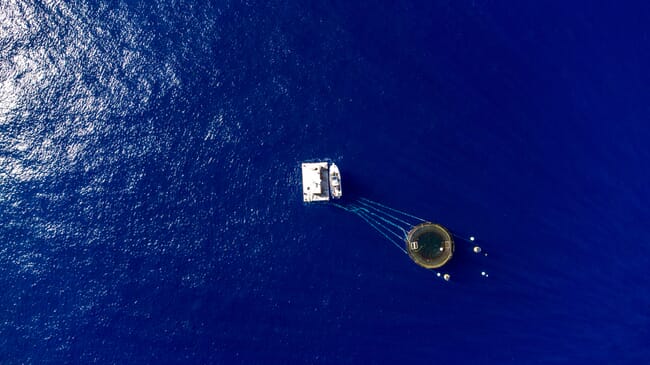
© Forever Oceans
The report, Toward an environmentally responsible offshore aquaculture industry in the United States: Ecological risks, remedies, and knowledge gaps, comes as interest in offshore aquaculture in the US continues to grow and US regulators consider what the appropriate framework for developing the industry should be.
“We aren’t starting from scratch,” said Rod Fujita, lead author of the report and senior scientist at Environmental Defense Fund (EDF), in a press release.
“There are many lessons from nearshore aquaculture practices and existing offshore pilot projects that we can apply to offshore aquaculture. But there are also many unanswered questions, so more research is needed to create a regulatory framework that safeguards the environment based on science, while allowing the offshore aquaculture industry to develop in the US,” he added.
The report, which has been published in the scientific journal Marine Policy identifies key gaps in knowledge concerning the potential risks of offshore aquaculture and potential mitigation strategies, including:
- Siting optimisations: what are the best approaches for choosing sites to optimise production and environmental performance?
- Infrastructure and marine wildlife: how can the risk of damage and harmful interactions with wildlife be mitigated?
- Disease and escape prevention: what siting criteria would minimise the risk of disease and pathogen outbreaks? Will some types of infrastructure pose lower risks of escape than others?
- Stocking: what data are necessary to determine optimal stocking densities for specific species in certain locations? How should optimal stocking be defined?
- Feed: how do respective environmental consequences of current and future feed ingredients compare? How can the environmental footprint of feeds be reduced?
- Metabolic waste: what monitoring methods and metrics should be used to avoid adverse impacts of metabolic waste around offshore sites?
“Offshore aquaculture in the US presents an exciting opportunity for more homegrown seafood but, like any ocean use, it must balance industry development with the conservation of marine ecosystems and wildlife,” said co-author Matthew Thompson, aquaculture programs manager at the Anderson Cabot Center for Ocean Life. “To achieve this balance, several outstanding challenges require innovative solutions which we hope this work will inspire.”
The report is a springboard for next steps in shaping a regulatory framework for a science-based approach to aquaculture.
Halley Froehlich, report co-author and assistant professor for marine aquaculture and fisheries science at the University of California, Santa Barbara (USCB) said, "Offshore aquaculture is growing in interest and application, so highlighting its potential, risks, and research needs is critical to help chart a better path forward."



